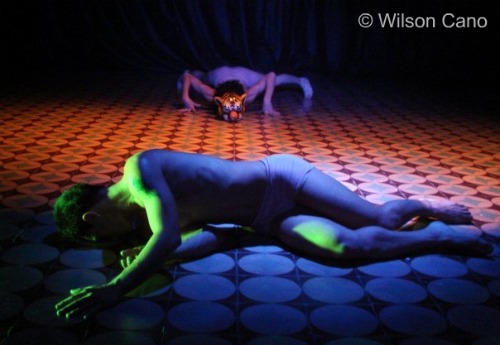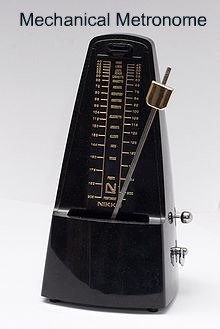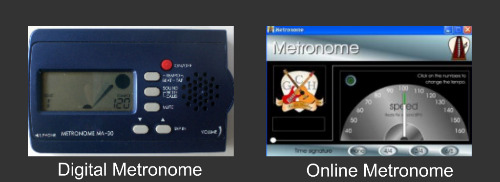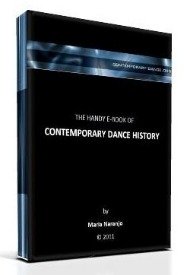CONTEMPORARY DANCE MUSIC
What’s the music used in contemporary dance?
Does anybody know good contemporary dance music for my choreography?
How do I order a musician to compose for my choreography?
These questions are very common, don’t worry (contemporary dance is nowadays such a wide artistic field that in some aspects it can be confusing). Those questions are at the same time easy and difficult to answer.
You know there are no established movement patterns in contemporary dance, although you might have seen recognizable choreographic vocabulary at your school or in shows. Though, contemporary dance is an art that doesn’t put itself bounds to experiment or play with its elements.
So, like its movement, contemporary dance music isn´t really established neither (you might feel that there are trends though and that is true). Somehow this means that you can dance to any music…
But… if you have tried already, you know YOU will not like to dance to anything. That happens to all of us. So, how to choose, search for or ask?

One first thing that can help on this is to try to find the identity of the dance you want to create. It can be your personal identity, or the one of a particular choreographic project. (Identity is an idea or feeling that would be coherent with the shape, dynamics and the rest of components of the dance). When you think you’re clear about it, start considering the following:
First of all, remember that contemporary dance is one of the few dance types that enjoys silence. You can dance in the silence, just as many MANY contemporary dancers do. We don’t need to be constantly stimulated by sound or rhythm, as we maintain a wide spectrum of sensible perception activated.
But we love music and sound as well. To decide which music (or soundscape) would be better for your dance, it is also useful to be clear on what type of artistic project is your choreography. Usually the type of music responds to that criterion and by that it makes part of the coherence of the whole idea as an aesthetic unit.
1. Are you proposing an original choreographic structure or do you want to rely on a musical one?
2. Are you working over a concrete subject (your dance is the metaphor of a story) and need to support the content and emotions transmitted by the choreography?
3. Are you creating an abstract piece and don´t want music to interfere with this intention?
4. Is your dance short (say a 4 minutes piece) or are you working on a ‘one and a half hour’ show?
5. What is the purpose of this dance and who is it for?
Answering to these questions will give you a first guideline to start your research.
The answer to the first question will tell you if you should choose between already existing music or asking a musician to compose an original piece for your choreography.
If you don’t care about proposing an original movement dramaturgy, or aren’t just in the case to do that work, you can choose an existing musical piece and compose the dance following its structure, rhythm and dynamics. Otherwise you might need to ask a musician to compose for you.
The last two options apply in case you want unity and coherence between dance and music (what some people call musicality when talking about dance). But again, as contemporary dance is so highly experimental, remember that according to the general purpose of your artistic project, unison between dance and music can be denied or ignored.
One good thing about asking a musician to compose for you is that you will have an original, perfect fitting soundtrack. Depending on your choices, non original music can be highly distractive for certain audiences. Having your own music will also give a unique identity to your piece and will free you from paying rights (in case you’re performing in public).
On the other hand, you will very probably have to pay for the music, unless the composer is part of the working group. But, if you care about artistic quality and ‘originality’, it’s important to consider this investment.
Now, if you’re working on a piece related to a concrete subject and want to be literal (for example when doing pieces for kids), you might have very defined restrictions.
Lyrics in music can be difficult to handle or justify from the symbolic perspective. If they are not composed originally for your piece, they might carry verbal content which is not related to your theme. Remember that spectators pay big attention to words. What those say can determine a lot of what an audience perceives of a dance.
Really, unless you have original music with your own lyrics, it is always much easier to handle instrumental music. You’ll need to pay attention to its dynamics and character, but it will focus your audience attention a lot more in the dance and the content transmitted by choreography.
The same will apply if you’re working on an abstract dance, because lyrics will introduce a concrete content. You can always do experiments with music with lyrics and see if you like the result. The truth is that instrumental music assures you the way to abstraction.
If your dance is short, it might be easy to find already existing songs or musical fragments. Though, it might be also easy to convince a musician to do the music for you. If you decide to pay for it, it will be cheap.
Now, if you’re working on a longer show, the task becomes more delicate. Be careful with the solution of pasting already existing songs one after another. Music and sound are like movement for the dancer, color for the painter or space for the architect. You might have a musical sense, but unless you have studied music for some years, avoid elaborating musical collages on your own. Ask for advice and be respectful of the musical pieces you choose to edit.
In the case of a long show or choreography, a good solution is whether to use a long musical piece that already exists (which can be found between classical or academic contemporary music, rarely in popular music) or to work seriously with a musician or sound editor.
That is an option mostly for professionals, but also for enthusiastic learners and all those who care about artistic quality in their dance performances.
This doesn’t mean that you can not create a great musical collage on your own, at home, and with the basic audio editor that comes by default in your PC. That is possible too, of course. Though, I don´t think that will be an easy and fast work neither, so it might be worth getting a musician’s help.
Think about the purpose of what you’re creating from an artistic point of view. Is it a professional, high quality product? Do you have a popular audience or a more elite one? What will be the context of your performances? Do you want to learn from it or do you just want to solve homework and move on?
There are many matters that can help you determine the most adequate music to accompany your choreography. For me, this has always been a difficult point to solve in my creative processes, as I’m a contemporary dance choreographer who gives a LOT of importance to the soundscape or music of my pieces.
Of course, you can always simplify things and just pick up some music that makes you feel like dancing… (it can be as simple as that). But you know, as I do, that there’s more to work about it in most of the cases.
If you decide yourself to ask a musician to compose for you, you should be sure of how to communicate with her/him (in musical language terms). That will assure an effective work and an easy assembly between dance and music that are composed somehow separately. Read the following tips before meeting your composer.
HOW TO ORDER A MUSICIAN TO COMPOSE FOR YOUR CHOREOGRAPHY
Basics that a musician needs to know to create contemporary dance music:
1. The length and rhythm (if any) of the musical fragment.
2. The structure (parts and dynamics within the whole).
3. The general concept (words or feelings that define your idea).
4. Specific needs.
1. The length of the musical fragment.
You have two options to explain this to your musician:
-In chronological terms: seconds, minutes or hours. You can just tell her/him that you need three minutes of music, or three minutes and forty seconds… whatever it is that you want.
If you don’t give the musician more information than this, she/he will have the responsibility to choose if he creates rhythmical or non rhythmical music. She/he will also decide which type of rhythm or measure to use (if that’s the case).
Listen to this example of non rhythmical music:
This way to order your music is o.k. if you’re searching for a non rhythmical piece or sound fragment. But, if you want something with rhythm, you might want to give your musician more specific directions, like this:
-In musical language terms: beats, tempo (beats per minute), type of measure or phrasing.
The beat is the basic unity used to measure time in musical and choreographic language. For example here you will listen to four beats:
Beats are like the bones of music. All sounds are somehow related to them. You can feel them when listening, even if there is not a specific instrument playing them. For example here you can listen to a musical fragment of eight beats:
When dancing, beats are what we count… like five, six, seven, eight! (bet you know this…). Five, six, seven, eight are the last four beats of a choreographic phrase of eight beats.
So, if you want to communicate with your musician in musical language, you can count the total amount of beats of your choreography. For example you can tell her/him that you need a musical fragment of 180 beats, or 260 beats…
BUT… attention here. The amount of beats is always accompanied by other information: the tempo (beats per minute=bpm).
You know beats can go slow or fast. For example:
Eight slow beats (40 bpm):
Eight fast beats (160 bpm):
When you tell your musician the tempo of your choreography, you’re letting her/him know how slowly or fast the beat should go. This is VERY important to define if you are creating your choreography before having the music. You know that most movements need an own speed, or you might not be able to execute them… or they’ll loose their dynamic or feeling.

If your composer creates some music for you with a different tempo than the one of your dance, you will very probable have to change or adjust your choreography to match the music. In other words, you’ll have to redo your work and maybe loose some nice things you had already done.
So, measure the tempo of your choreography before going to the composer. You can only do this by using a metronome. This is a very simple tool that you can whether buy, ask someone to lend it to you or even use online, if you have internet and a computer where you rehears.
There are mechanical, digital and online metronomes. All are enough for what you need. Use it to know your choreography’s tempo and tell your musician, for example, that your beat should go at 100 bmp, 160, or whatever.

Now, measures and phrasing are also part of your dance musicality, even though you might not think about them so much.
Measures and phrasing are the way in which beats are organized. In the most common western music and dance, beats are usually gathered in regular groups within the whole musical or choreographic fragment. For example, they can be assembled in groups of four, like this:
Measure of four beats (when dancing, you count in four or its mathematical multiples, 8, 12, 16…):
Or they can be assembled in groups of three, like this:
Measure of three beats (when dancing, you count in three or its mathematical multiples, 6, 9, 12…, like when dancing a waltz…):
The type of measure you choose will determine a part of the character of the dance and music. It is also important to have it clear if you want them to match precisely. But, if you don’t want worries about this, you can leave it to the composer. She/he will know what to choose, for sure…!
Don’t confuse measure (or bar) with phrasing. Measure is a basic gathering of beats. A phrase is a choreographic or musical sentence that can last several measures and that has a feeling of a beginning and an ending.
You can have music over measures of four beats to which you perform choreography that has phrases of eight beats. The famous counting that ends in ‘five, six, seven, eight!’ is an example of this.
Musicians will most probably compose using measures, as they usually serve themselves of the basic ways of gathering beats. Though, you can also tell her/him if you’re phrasing with other lengths in order for her/him to take it in consideration.
2. The structure (parts and dynamics within the whole).
If beats are like the bones of music, the structure is like its skeleton. It is the whole organization of the piece: its shape (parts, lengths…), dynamics (how intense they are) and articulations (how you go from one to another).
If your dance is short, it might consist very probably of just one part. But within it, there might be some changes in its dynamics. For example it might start slow and light and end fast and strong.
Long dancing pieces usually are composed of several parts (or scenes). You could compose, for example, a show that has three parts, each of which has a different dynamic or character. The famous classical ballet ‘Swan Lake’ is an example of this.
So, be clear of your choreographic structure and make it clear to your musician. After you have identified this and if you have choreography divided in several parts, you can make the rhythmical analysis for each.
Now your composer knows a lot better what your dance needs. But still, only with this information, it is a very general idea. So…
3. The general concept.
When composing, musicians work like painters, architects, choreographers or any kind of artist. They rely on ideas or feelings to make the decisions of their creation.
So, define words that give her/him an idea of YOUR idea. You can communicate now as you wish, with images, metaphors or whatever makes that person understand what you want to create.
This will help the musician formulate melodic and harmonic choices, as well as those of the type of instruments and musical genre.
Invite her/him to some rehearsals if that is possible. Give him conceptual information as a guideline to work. If you know something about music, you can ask for a genre or style, like for example electronic lounge, minimalist, classical, urban hip hop, Ray Charles’ jazz, Chopin’s piano or whatever it is that you need…
Show her/him some examples that are close to what you’re looking for, if you have them.
And…consider that all musicians don’t produce all kinds of music. Usually they are specialized in genres, so it will be better if you ask first if this person can work on what you’re looking for.
4. Specific needs.
One last thing. Let your musician know if your choreography has specific needs. For example, there might be a moment in which you wish to be in silence. Or there might be a very strong movement that you want to emphasize with the help of sound.
If you do the rhythmical analysis, like shown above, you can ask for very precise details within the music, for example: ‘I want strong drums between beats number 11 and 17…’. When composing, they can do whatever you ask for. That’s the best part of ordering original music for your piece. It will fit like anything.
Final tips:
- Remember to establish from the very beginning if your sound will be rhythmical or not. Or if the case is that you want to have several rhythmical parts and some non rhythmical ones…
- Make the rhythmical analysis for each of your parts (counting beats, tempo, and definition of measure or phrasing) and decide if the tempo is unique during the whole piece or if it changes in the different scenes.
- Establish your dynamics in terms of speed, intensity, density and whatever else you think can make your musician understand the character of your dance.
- Try to imagine your music and help your composer with any ideas that come to your mind.
- Read the following article: Good music for contemporary dance
- Search in the web for musicians that specialize in contemporary dance music and that already have great websites where you can know their work and contact them. Here are some examples:
Mike Wall from SoundforMovement
Oliver from Contemporary Dance Music
And, of course, as for everything concerning contemporary-dance.org, I’m opened to help you solve your doubts about contemporary dance music. Use our page for dance questions if there's something you still want to know or understand better. I’ll do my best to give you a great answer.
Return from Contemporary Dance Music to Choreography
Return from Contemporary Dance Music to Contemporary Dance Home Page
The handy e-book of CONTEMPORARY DANCE HISTORY:
The Dance Thinker is our occasional E-zine. Fill in the form below to receive it for free and join us.
Read:
"The Dance Thinker"
BACK ISSUES
Post contemporary dance announcements (workshops, auditions, performances, meetings and important news... it is free.)



